The City Opera House Brings Big-Time Entertainment To Watertown, NY.
The City Opera House, later known as the Avon Theater, opened on January 4, 1886, and was fairly close to the Watertown Armory and across from the Governor Flower Mansion. Designed by local architect John W. Griffin with the interior credited to Leon H. Lempert of Buffalo, the opera house cost an estimated $75,000 at the time – the equivalent of $2,167,787 in 2021 – and could accommodate nearly 1,800 patrons.
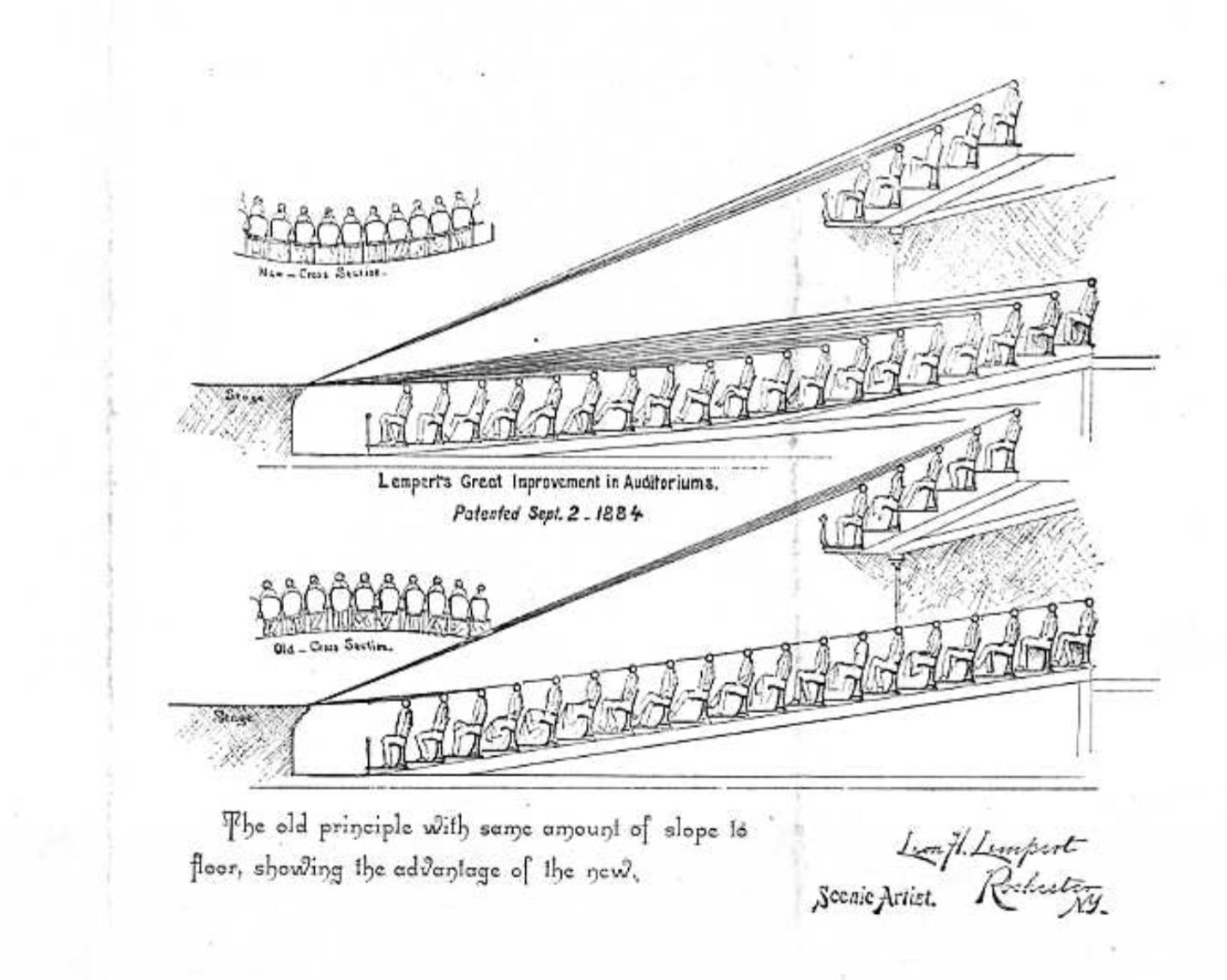
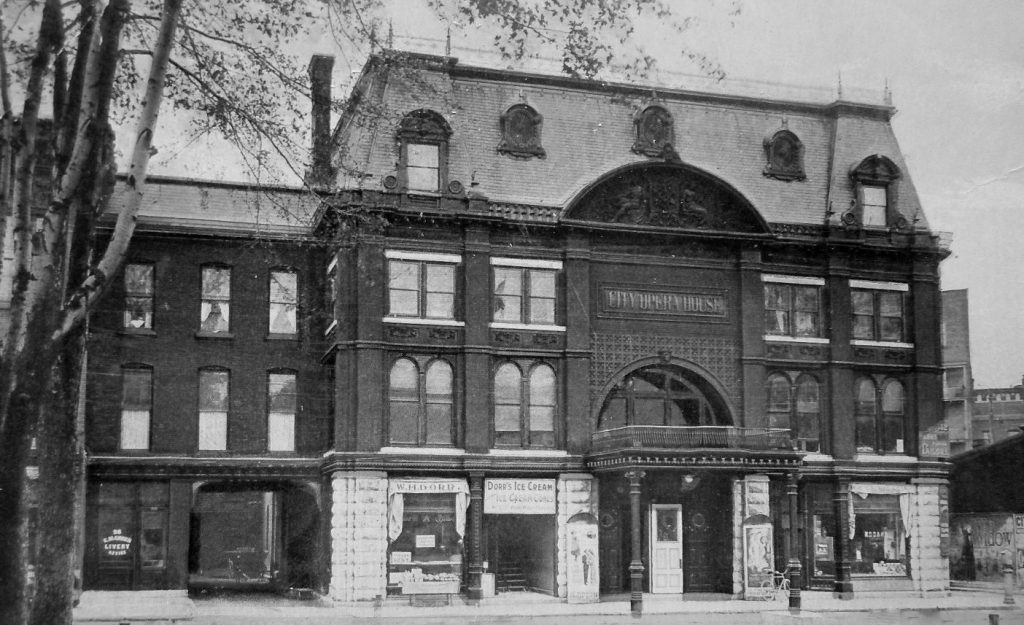
A Local Connection Becomes Manager…
Vaudeville and stock companies were the big draws in the early days of the Opera House, along with other live performances. One local manager, Winfield Scott “Scotty” Mattraw, a 362-pound “funny guy,” became the manager of the City Opera House and help to bring in acts from New York City.
According to the Watertown Daily Times
Perhaps his biggest coup was bringing in Harry Lauder, an internationally famed Scottish singer and comedian who came to Watertown on January 31, 1916. The house was packed with some 1,400 people, a large portion of whom were reported to be of Scottish blood.
It wasn’t long before Scotty found himself on stage.

…And Then A Hollywood Star after The Opera House Underwent Extensive Renovations And A Name Change To The Avon Theater.
In 1920, the City Opera House, still under management by Scotty, would undergo extensive remodeling and re-open as The Avon Theater. While motion pictures were all the rage, there were still a number of years of vaudeville acts and stock companies, the last known performance taking place in 1932. Scotty would make the leap into vaudeville and, by 1923, find himself moving to Hollywood, where he would appear onscreen with some of the biggest comedians of the era and star in the likes of “The Thief Of Bagdad.”
Appearing in over 600 movies, perhaps his least-recognized role was due to an uncredited role as the voice of Bashful in Disney’s 1937 release of “Snow White and the Seven Dwarfs.”Scotty would maintain ties with the local community throughout the rest of his life, passing away at the age of 66 on November 9, 1946, in Hollywood.
Buster Brown Drew 1,500 To the City Opera House
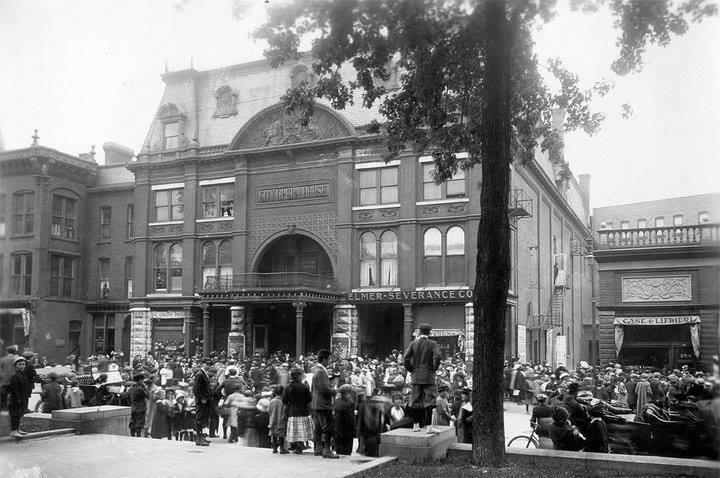
Buster Brown was a comic strip character created in 1902 and would become the adopted mascot of the Brown Shoe Company two years later and would go on to star in popular live-action two-reeler films in the 1920s.
On June 3, 1914, Buster Brown visited Watertown with his dog Tige. The Daily Times would report–
Probably the largest crowd that ever congregated in the city for an attraction of the kind gathered at the City Opera House Wednesday afternoon to witness the performance given by Buster Brown and his trained dog. The theatre was crowded to the limit, the audience consisting largely of children. Outside fully 1,500 more people clamored to get in, but were turned away.
Buster Brown, the 14-year old youngster, who hails from Austin, Tex., and has traveled from the Atlantic to the Pacific during the past two years giving exhibitions with his trained dog and advertising the Buster Brown shoe for children, was brought here by Berow & Munro, local shoe dealers.
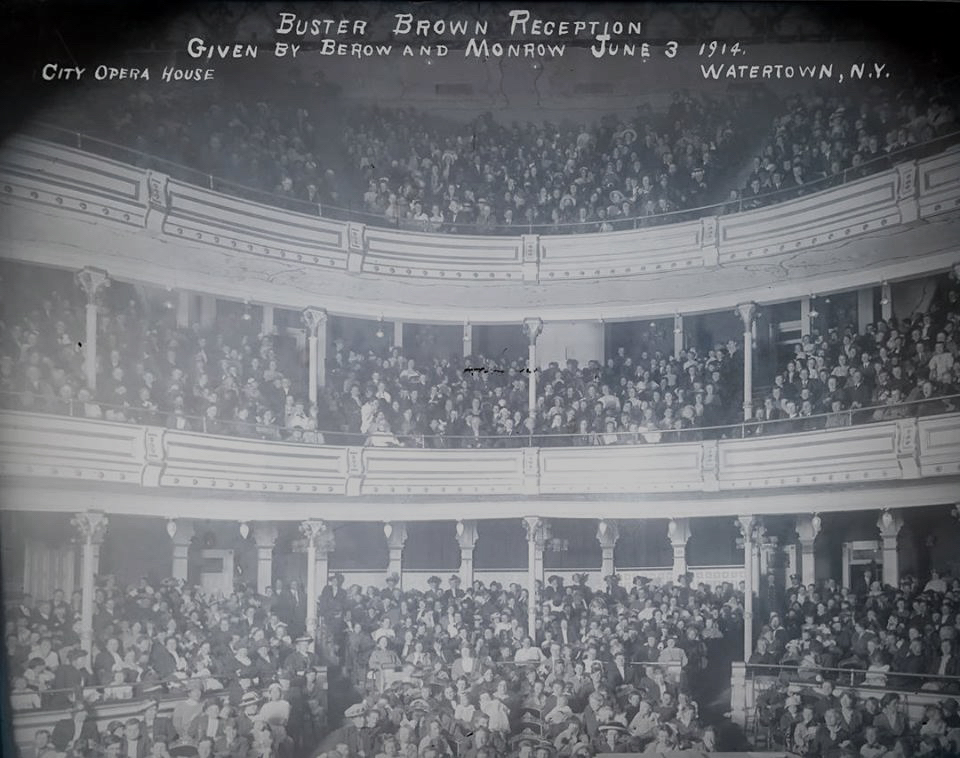
A Stop During The 1916 Presidential Election
In 1916, former New York Governor Charles E. Hughes, then serving as Associate Justice of the Supreme Court, resigned his position to accept the Republican Nomination and run for President of the United States.
His campaign would make a stop in Northern New York just a week before the election. The Watertown Daily Times would report–
The governor spent Sunday night in Ogdensburg in comparative quiet. He addressed a monster meeting there Saturday night, closely following his speech in Watertown in which he was heard by nearly 2,000 people in the City Opera House.
Hundreds more, unable to get inside, would wait outside where the photo below was taken. Although Hughes would lose the election, he would continue to serve in politics, becoming the 44th Secretary of State from 1921 – 1925, then the United States Chief Justice from 1930 – 1941.

Urban Renewal Leads To A Final Curtain Call
Like many cities in the late ’50s and ’60s, Watertown’s core of older buildings downtown, particularly Arsenal and Court Streets, would be deemed “blight.” Rather than undergo preservation, opportunistic city leaders were eager to obtain federal money to raze many historic properties deemed to be either beyond their intended lifespan or too costly to restore.
The city’s urban renewal department went on to purchase properties, including The Avon Theater, for $106,000, as part of its urban renewal development. The Avon Theater would meet the wrecking ball in 1967, one of many Watertown landmarks to become nothing more than rubble and memories.
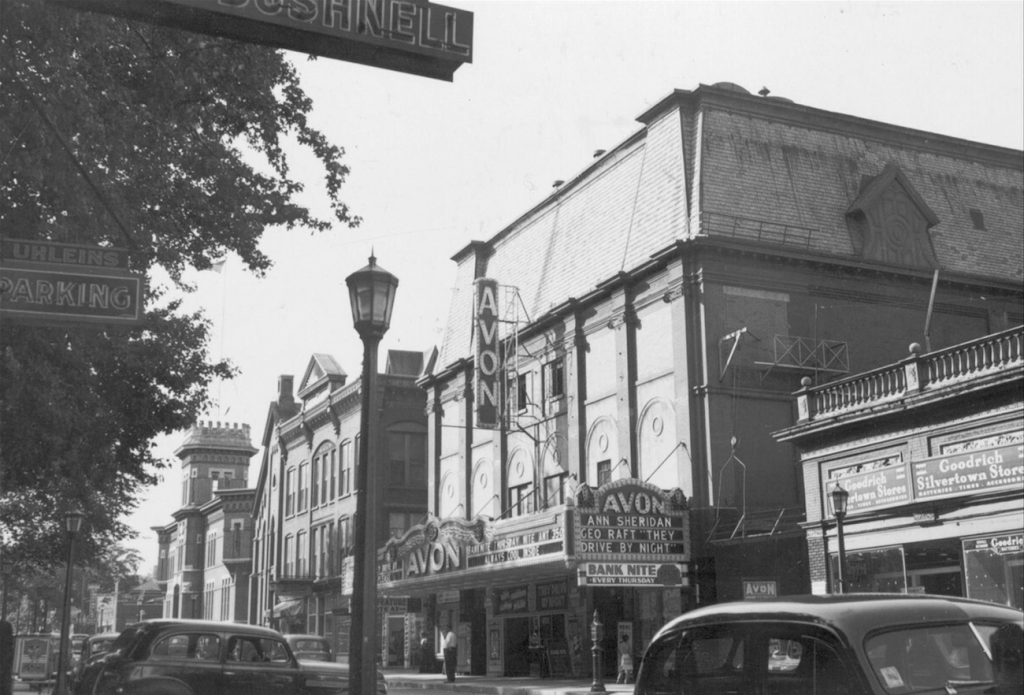
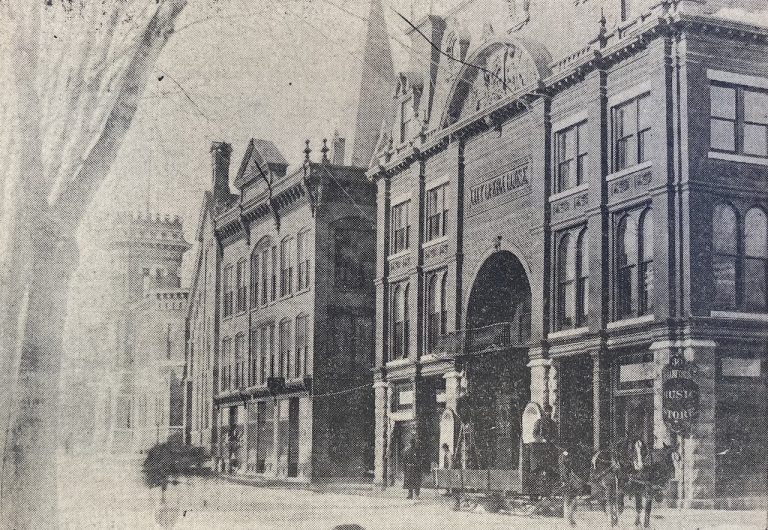
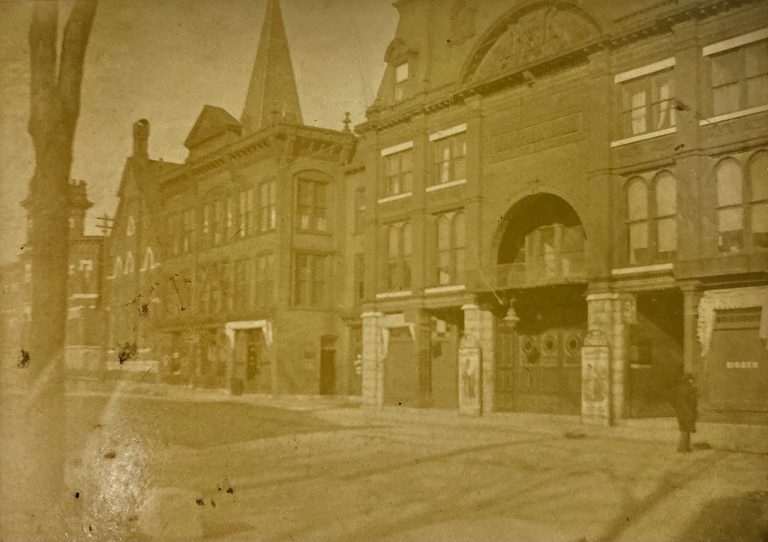
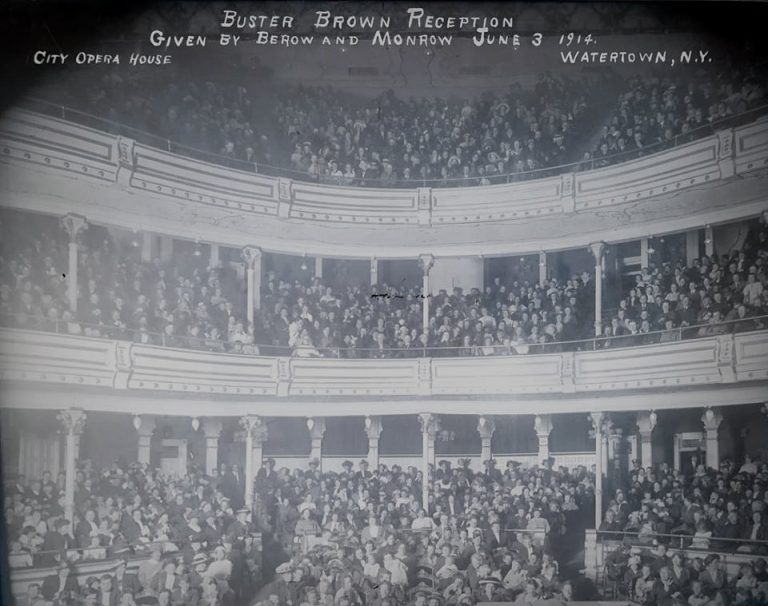
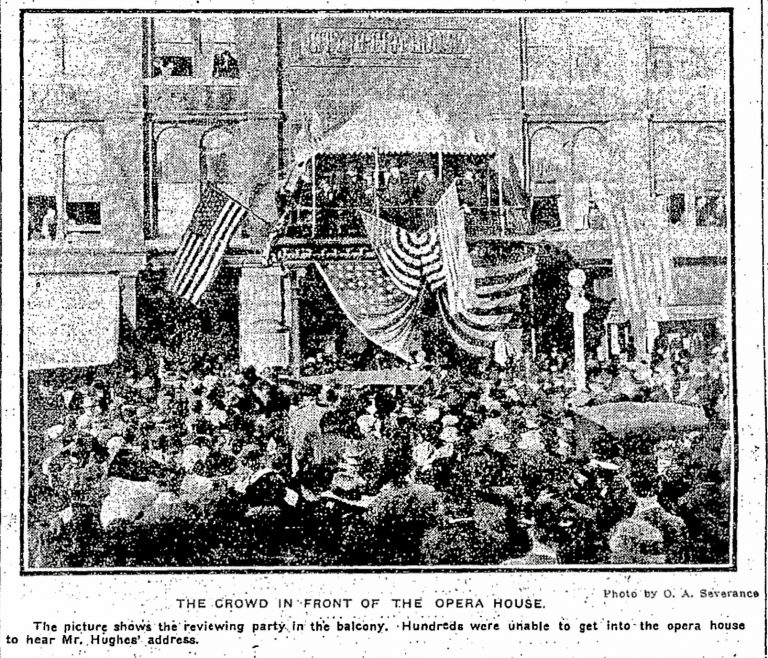
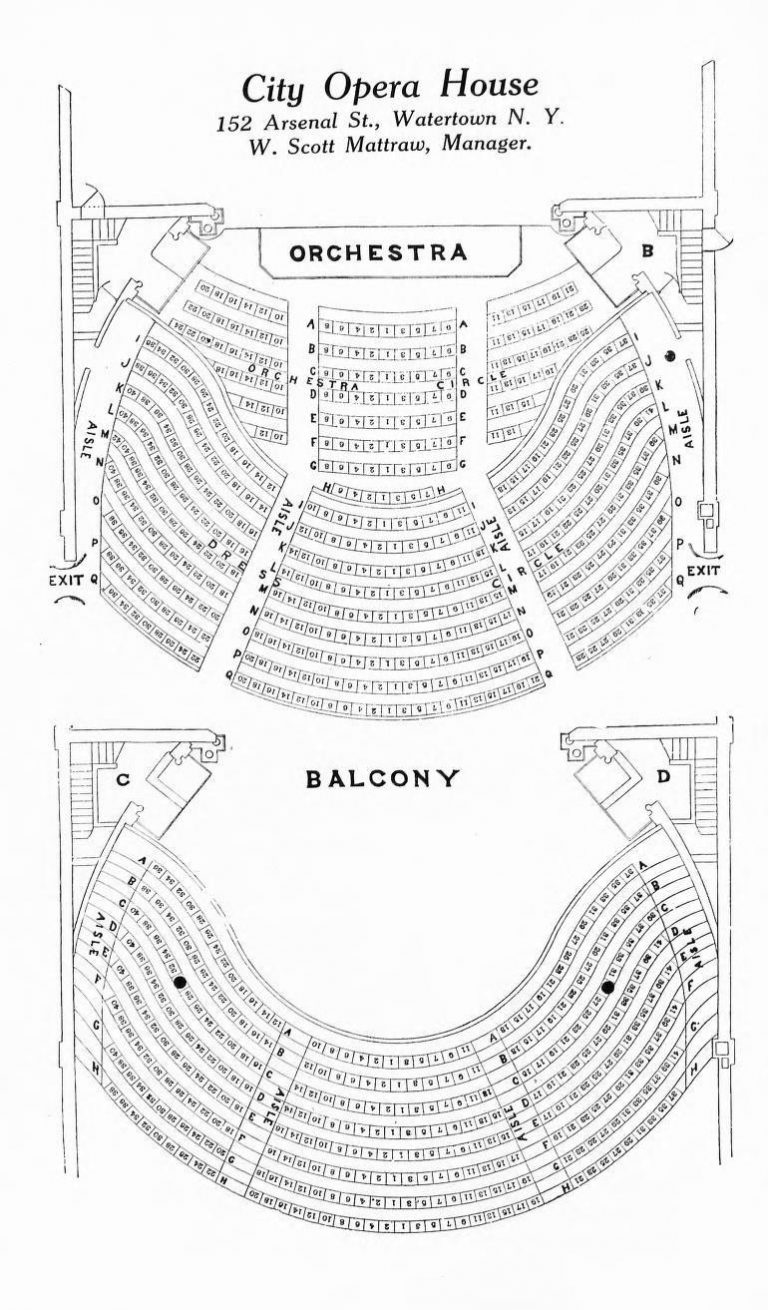
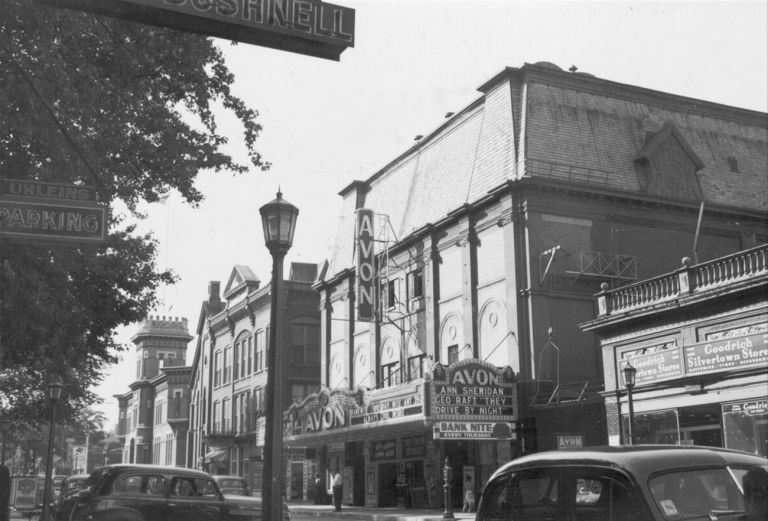

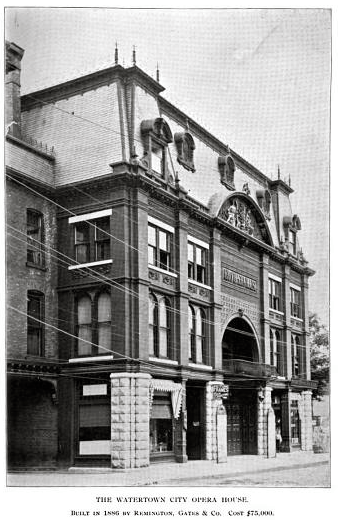
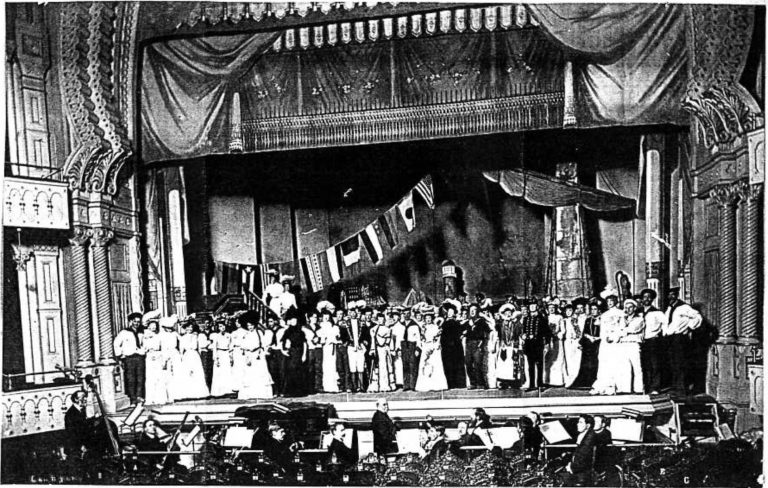

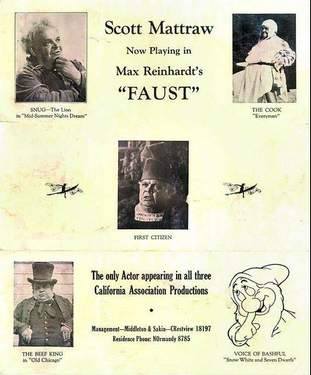
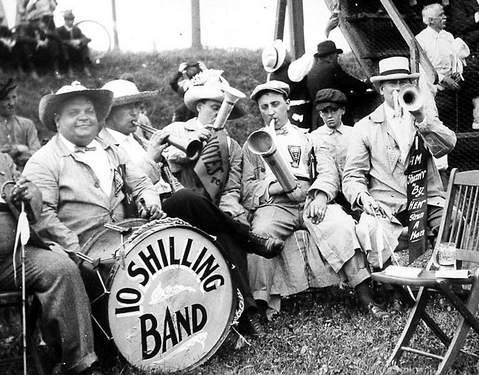
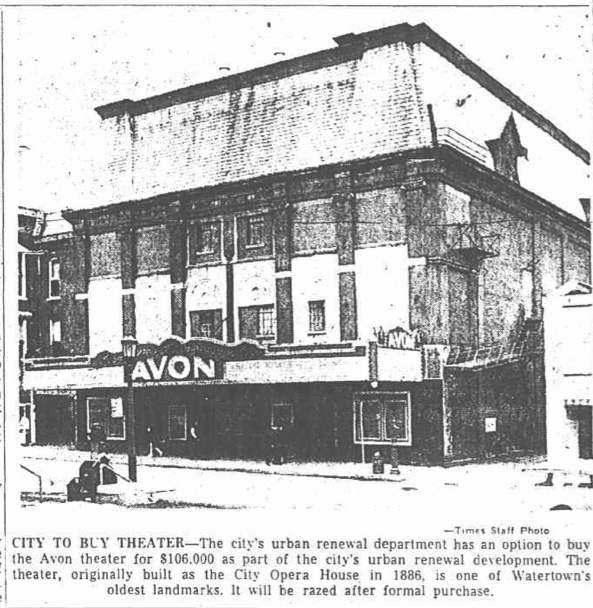


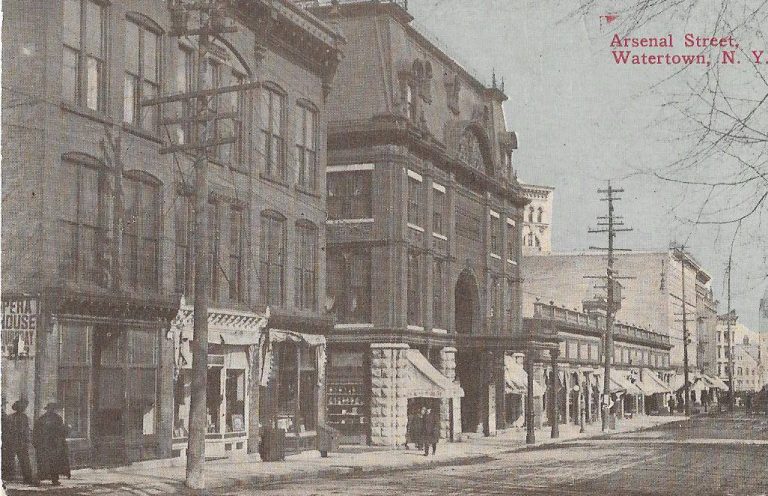
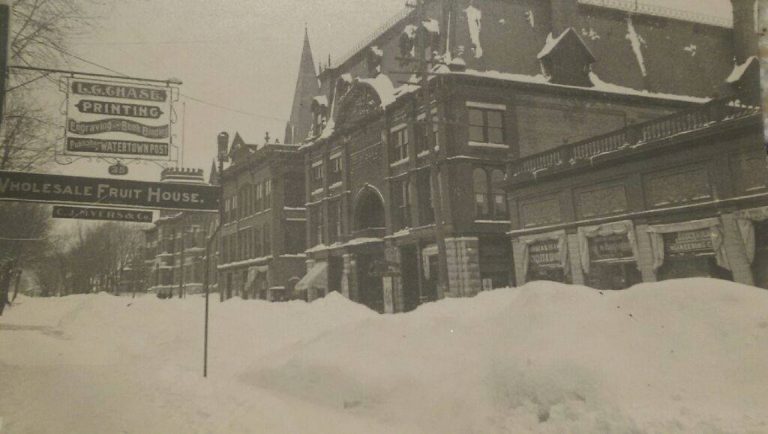

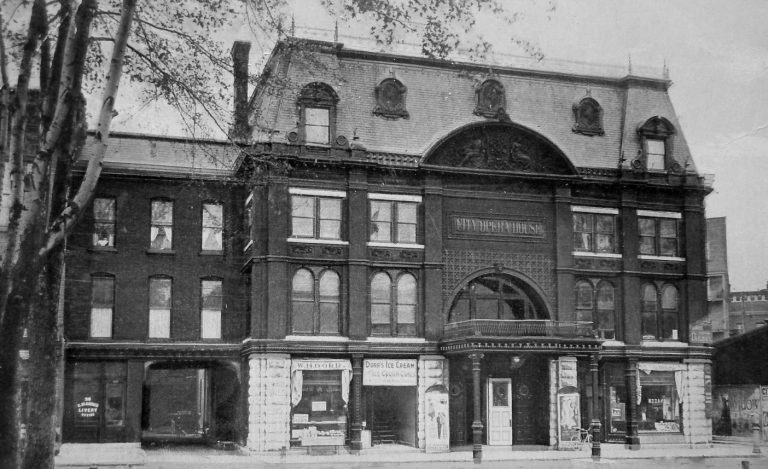
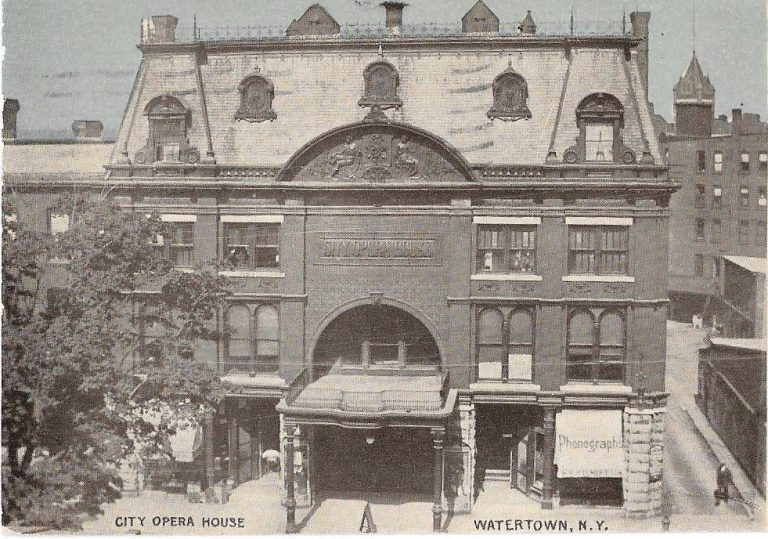
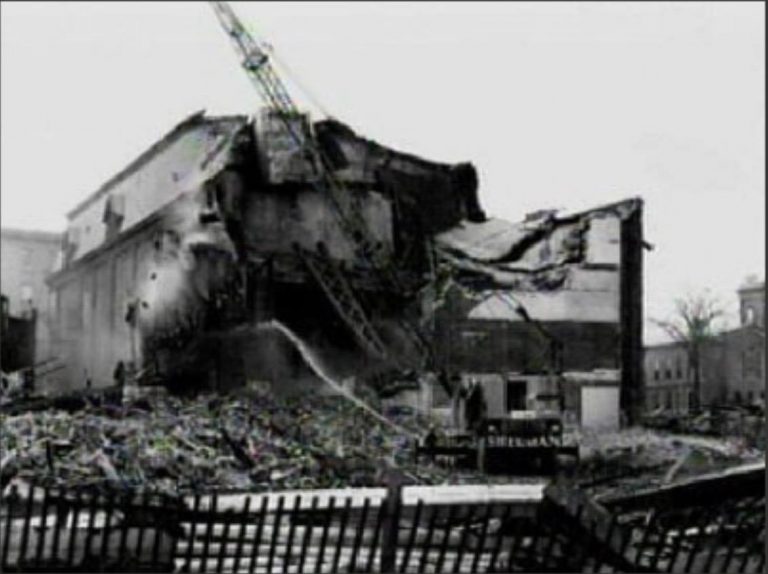
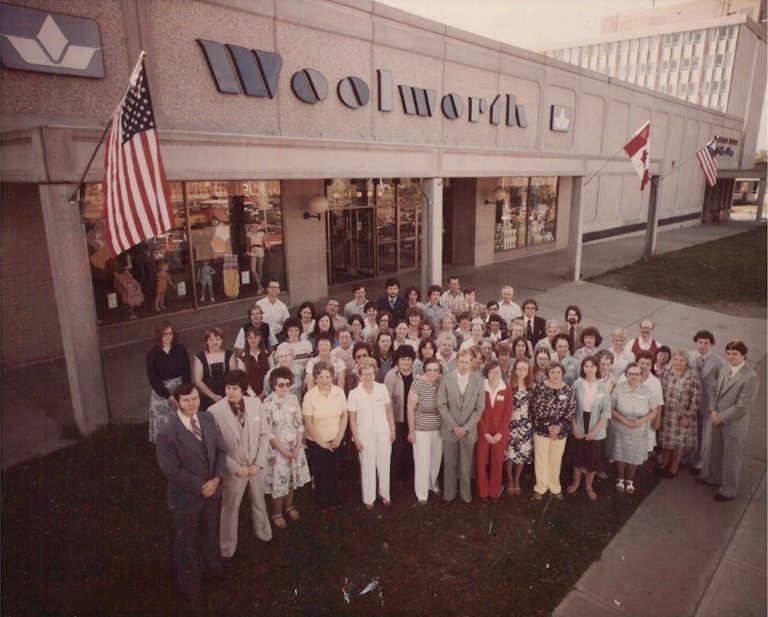
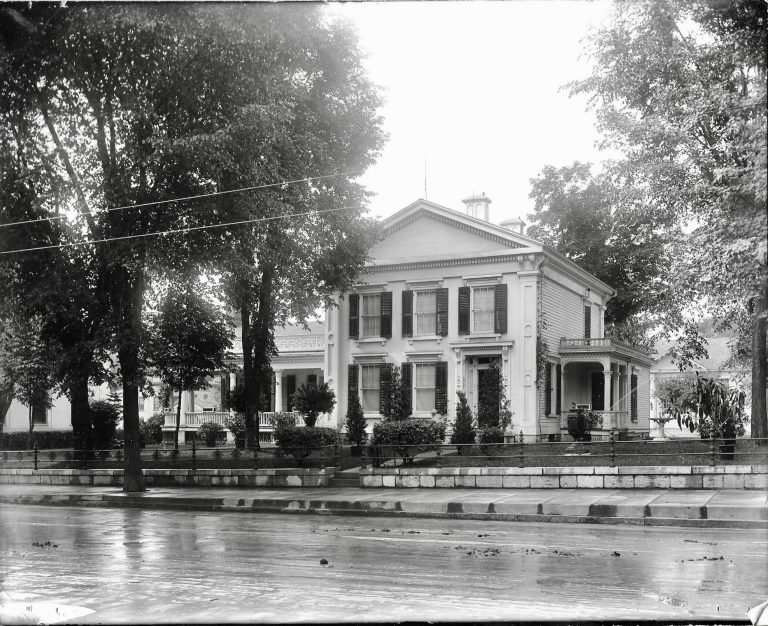

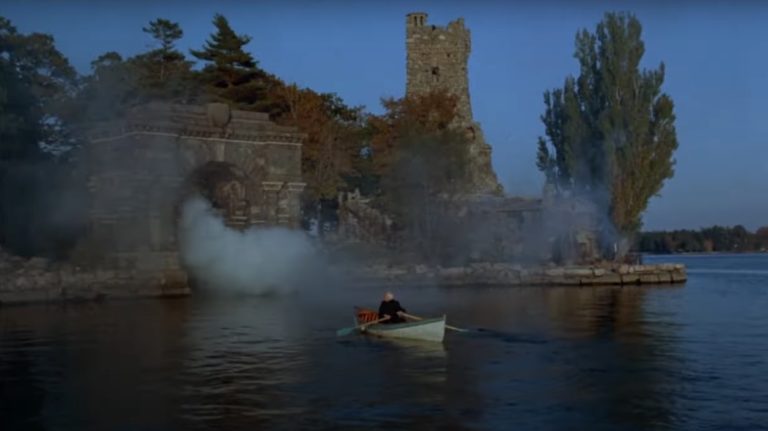


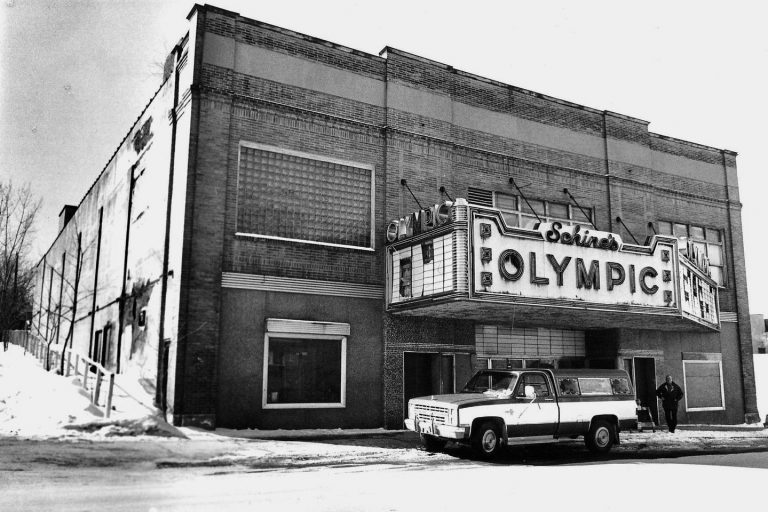

2 Reviews on “City Opera House – Avon Theater (1886 – 1967)”
The Avon and Olympic theater were my favorite venues in the 40’s and 50’s. When I was in 6th grade, during the depression, an Opera Company from NYC came to the Avon theater to perform the Opera, Aida. They had a performance for students and my mother found a way to have us pay the entrance fee of 25 cents so we could have the memory of seeing this opera. I am now 95 years old and this memory is still vivid in my mind. Thank you, Mamma.
Thank you for sharing that memory! That must have been a real treat!
The day the Avon Theater came tumbling down.